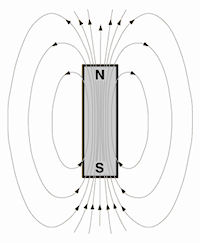Article 2010
From NASA Science News, September 21, 2010
Solar Storms can Change Directions
September 21, 2010
Solar storms don't always travel in a straight line. But once they start heading in our direction, they can accelerate rapidly, gathering steam for a harder hit on Earth's magnetic field.

So say researchers who have been using data from NASA's twin STEREO spacecraft to unravel the 3D structure of solar storms. Their findings are presented in today's issue of Nature Communications.
"This really surprised us," says co-author Peter Gallagher of Trinity College in Dublin, Ireland. "Solar coronal mass ejections (CMEs) can start out going one way—and then turn in a different direction."
The result was so strange, at first they thought they'd done something wrong. After double- and triple-checking their work on dozens of eruptions, however, the team knew they were onto something.
"Our 3D visualizations clearly show that solar storms can be deflected from high solar latitudes and end up hitting planets they might otherwise have missed," says lead author Jason Byrne, a graduate student at the Trinity Center for High Performance Computing.
The key to their analysis was an innovative computing technique called "multiscale image processing." Gallagher explains:
"'Multiscale processing' means taking an image and sorting the things in it according to size. Suppose you're interested in race cars. If you have a photo that contains a bowl of fruit, a person, and a dragster, you could use multiscale processing to single out the race car and study its characteristics."
In medical research, multiscale processing has been used to identify individual nuclei in crowded pictures of cells. In astronomy, it comes in handy for picking galaxies out of a busy star field. Gallagher and colleagues are the first to refine and use it in the realm of solar physics.
"We applied the multiscale technique to coronagraph data from NASA's twin STEREO spacecraft," Gallagher continues. "Our computer was able to look at starry images cluttered with streamers and bright knots of solar wind and zero in on the CMEs."
STEREO-A and STEREO–B are widely separated and can see CMEs from different points of view. This allowed the team to create fully-stereoscopic models of the storm clouds and track them as they billowed away from the sun.
One of the first things they noticed was how CMEs trying to go "up"—out of the plane of the solar system and away from the planets—are turned back down again. Gallagher confesses that they had to "crack the books" and spend some time at the white board to fully understand the phenomenon. In the end, the explanation was simple:

The sun's global magnetic field, which is shaped like a bar magnet, guides the wayward CMEs back toward the sun's equator. When the clouds reach low latitudes, they get caught up in the solar wind and head out toward the planets—"like a cork bobbing along a river," says Gallagher.
Once a CME is embedded in the solar wind, it can experience significant acceleration. "This is a result of aerodynamic drag," says Byrne. "If the wind is blowing fast enough, it drags the CME along with it—something we actually observed in the STEREO data."
Past studies from other missions had revealed tantalizing hints of this CME-redirection and acceleration process, but STEREO is the first to see it unfold from nearly beginning to end.
"The ability to reconstruct the path of a solar storm through space could be of great benefit to forecasters of space weather at Earth," notes Alex Young, STEREO Senior Scientist at the Goddard Space Flight Center. "Knowing when a CME will arrive is crucial for predicting the onset of geomagnetic storms."
"Furthermore," he says, "the image processing techniques developed by the Trinity team in collaboration with NASA Goddard can be used in applications ranging from surveillance to medical diagnostics."
To learn more about zig-zagging CMEs and the advanced computing techniques used to track them, read "Propagation of an Earth-directed coronal mass ejection in three dimensions" by Byrne et al in the Sept. 21, 2010, issue of Nature Communications.
Author: Dr. Tony Phillips | Credit: Science@NASA



